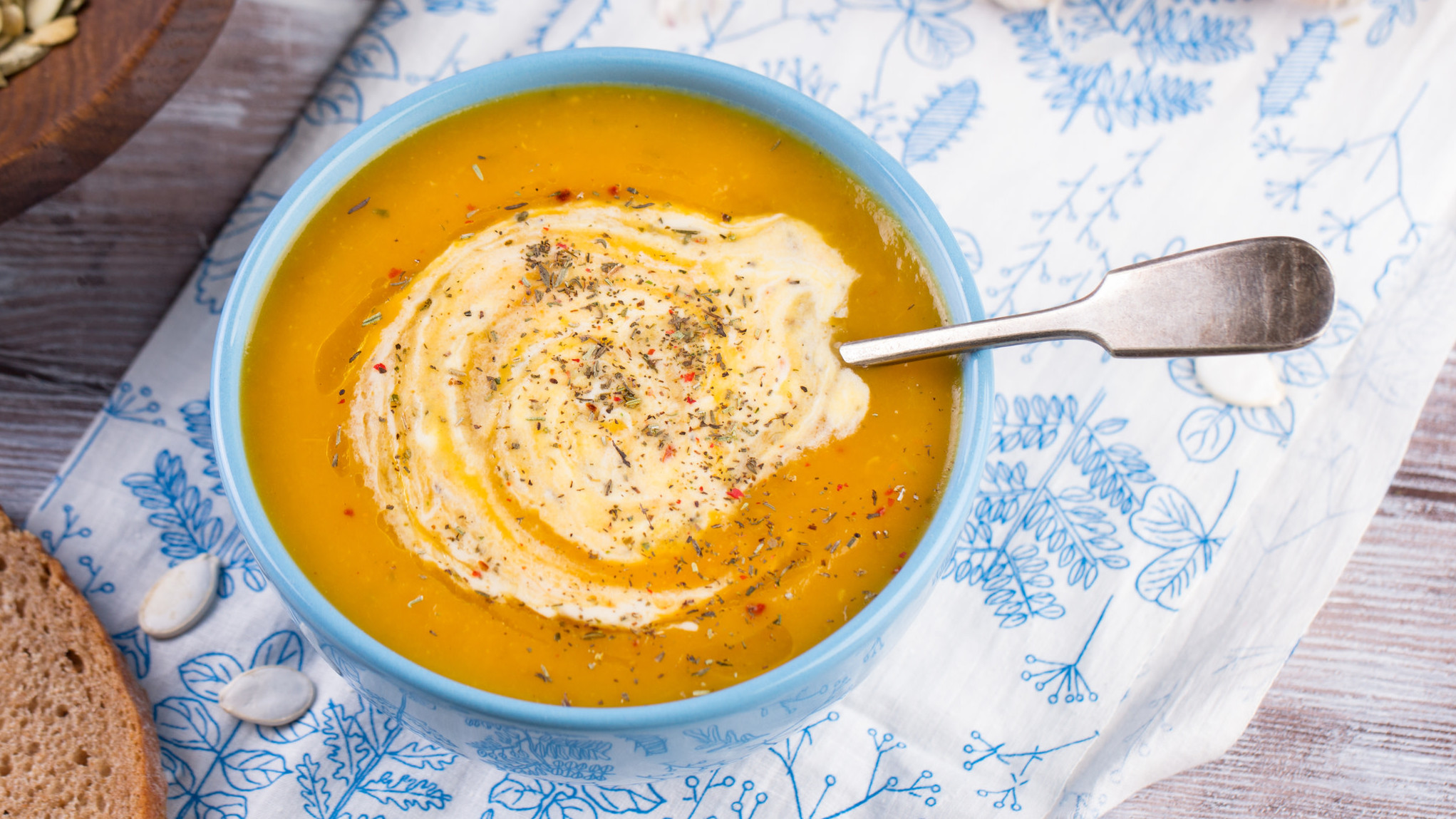Make A Great Soup By Taking All The Right Shortcuts
My kitchen and I have been in a tumultuous relationship over the past few months, and if he had a group text thread with all of his friends, he would spend a lot of time complaining about me. It feels very much like being in a relationship you know is ending, when your person keeps telling you everything is fine every time you ask. But you know it's not. The routines you both once enjoyed are dusty from disuse, your regular date nights fallen by the wayside with the excuse of "working late" and "oh, I lost track of time." You're not even excited by the look of them anymore.
That has been me and my kitchen, as meal prepping and home cooking slowly slipped away, to be replaced by the busy standby of ordering in or grabbing something quick from the bodega.
More recently, I've been trying to re-establish a functional relationship with my kitchen. Sure, I had my bout of ordering Tonkotsu ramen from the same restaurant every week to soften the blow of subdued birthdays, canceled time off, and the deepening chasm between me and all the family and friends I couldn't see—plus some other existential dread. But once the first whisper of cold came over New York, and the leaves changed color and fell, it felt like the right time to rekindle my love of soups, always a comfort in the past.
My recent soup excursions have fallen into two main categories: the soups you need a recipe for, and the soups that let you cut corners, because you don't have what it takes to cook from scratch right now, but whew, you're trying.
Recipe soups come to fruition after bouts of uncontrollable nostalgia. Nostalgia that feeds you only happy memories of the scent of soup stock, and conveniently excises the memory of the 4-5 hours it takes to make. That nostalgia was how I found myself at a grocery store in Brooklyn searching for vegetables and cuts of beef to make Haitian légume. Légume is arguably a stew and not a soup, and it is intended to be served over a starch like rice or blé (bulgur wheat). Personally, I find the line between soup, chowder, and stew to be easily blurred depending on who is asking, and this dish lives comfortably on one of those blurred lines. Légume involves a lot of monotonous chopping of vegetables into similarly sized cubes—carrots, eggplant, chayote squash, cabbage—then checking on timing because none of these things cook at the same rate. My last time making légume was a leisurely Saturday afternoon; it took about two movies' worth of time, and it tasted better the next day after the flavors had time to meld.
Most of the time, though, I'm not making meticulous soups like legume, or chicken soups that involve breaking down a whole bird to make stock from scratch. Most of the time, I find myself gratefully succumbing to the assistance of soup starters. While soup stocks serve as the base for many soup recipes, soup starters are somewhat of a misnomer, as they are ready-to-eat soups. Two of the absolute favorites in my house are the sweet potato and butternut squash starters from Trader Joe's. Both of these include more than just the pureed vegetables mentioned in their name, and are lightly seasoned. Each container has 4 cups of soup, which translates into two meals for my partner and I.
While I'm sure you can heat up the soup starter, pour it into a bowl, and be perfectly content, my approach involves a callback to college days of doctoring ramen noodle soup packets to become something more filling. Now, instead of tipping chopped leftovers into a bowl of instant noodles, it's an intentional plan to balance flavors and use proteins and vegetables to create a perfect bite. The fun is in the experiment, trying to figure out which items in the pantry work best in a soup starter and keep you from giving up and reaching for your phone for ideas. A fun project has been turning soup-and-sandwich combo meals into soup alone. That's how I ended up with creamy tomato soup topped with toasted bread and crumbled goat cheese, or a shrimp melt with sautéed shrimp, raw onion, and celery with gruyere. I even tried a surprising thanksgiving soup: chicken soup topped with shredded chicken, kale, walnuts, and dried cranberries.
My go-to comfort soup has six ingredients; butternut squash soup starter, sweet Italian sausage, spinach, shallots, and goat cheese. In a quick 20 minutes, I can cook down crumbled sausage, sauté spinach and shallots together, add that to a heated soup starter, and top with goat cheese. I can dip in my soup spoon, often while still standing at my kitchen counter, and it'll come out with a perfect bite.
I've yet to encounter a soup that solves any more of my issues besides occasional hunger, but sometimes, after that first spoonful, it does seem possible.
